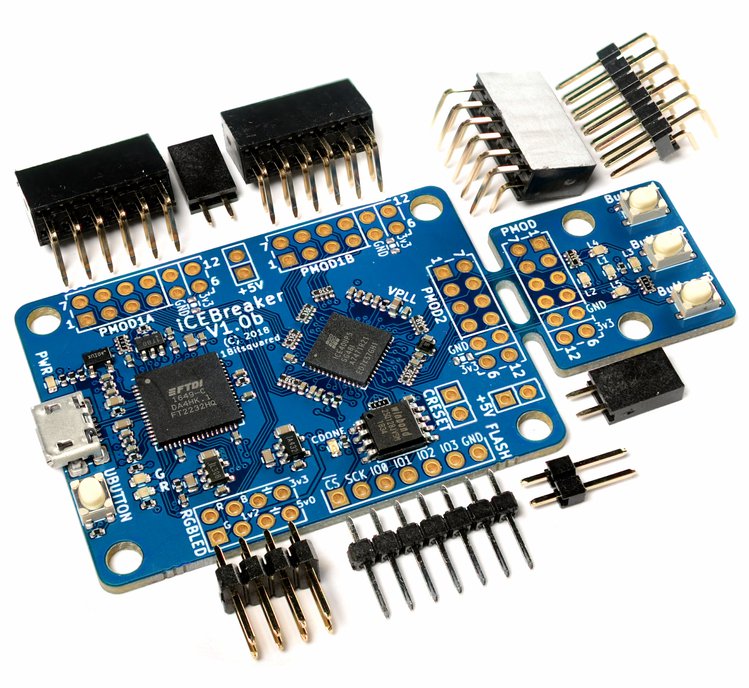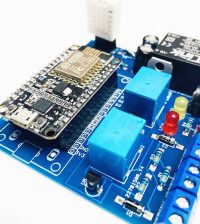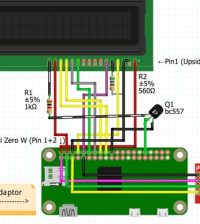- How to Adjust X and Y Axis Scale in Arduino Serial Plotter (No Extra Software Needed)Posted 7 months ago
- Elettronici Entusiasti: Inspiring Makers at Maker Faire Rome 2024Posted 7 months ago
- makeITcircular 2024 content launched – Part of Maker Faire Rome 2024Posted 9 months ago
- Application For Maker Faire Rome 2024: Deadline June 20thPosted 10 months ago
- Building a 3D Digital Clock with ArduinoPosted 1 year ago
- Creating a controller for Minecraft with realistic body movements using ArduinoPosted 1 year ago
- Snowflake with ArduinoPosted 1 year ago
- Holographic Christmas TreePosted 1 year ago
- Segstick: Build Your Own Self-Balancing Vehicle in Just 2 Days with ArduinoPosted 1 year ago
- ZSWatch: An Open-Source Smartwatch Project Based on the Zephyr Operating SystemPosted 1 year ago
iCEBreaker FPGA Development Board Specifically Designed for You

Field-programmable gate arrays (FPGAs) are a very different to a regular microcontroller board. With a microcontroller you have control over is the software, the code that runs on the chip, but with an FPGA you start with a blank slate and design the circuit rather than write the code that runs on it. There is no processor to run software, at least not until you design it.
If you are interested in learning more about digital logic design, for sure you have to take a look at this new development board created by 1BitSquared called the iCEBreaker FPGA. It is currently available on Crowd Supply for $69.
The iCEBreaker FPGA is built around the Lattice iCE40UP5k FPGA, capable of hosting CPU soft cores such as picorv32, picosoc, and RISC-V. It has an on-board FPGA programmer and USB-to-serial adaptor compatible with IceStorm’s programming tools.
FPGA Open source development board specs include:
Lattice iCE40UP5k FPGA
– 5280 logic cells (4-LUT + Carry + FF)
– 120 Kbit dual-port block RAM
– 1 Mbit (128 KByte) single-port RAM
– PLL, 2 x SPI, 2 x I2C hard IPs
– Two internal oscillators (10 kHz and 48 MHz) for simple designs
– Eight DSP multiplier blocks for signal processing such as audio synthesis and even software defined radio
– Low power consumption ideal for battery-powered applications
– Three 24 mA drive and 3 x hard IP PWM (can drive RGB LEDs and small motors)
Plentiful, fast storage
– 128 Mbit (16 MB) quad SPI double data rate (QSPI-DDR) flash
– Example: can stream video to LED matrix
Lots of I/O
– Three pins (header) for RGB LED
– Two on-board LEDs
– One UART, RX pin and TX pin accessible via virtual (USB) serial port
– One pushbutton
– Two available Pmod connectors (16 x pins total)
– One breakaway Pmod (8 x pins)
Pre-wired, breakaway Pmod module
– Input and output user accessible and usable in your own hardware design
– Five LEDs in a star pattern
– Three push buttons
Capable enough to host CPU softcores
– picorv32
– picosoc
– RISC-V and others
On-board FPGA programmer and USB-to-serial adapter
– Compatible with IceStorm iceprog tool
– Easy, driverless connection as a serial device to host computer
USB high speed
– On-board FT2232 USB chip
– Up to 480 Mbit/s interface to host computer
















Pingback: Open Electronics Article: iCEBreaker FPGA Development Board Specifically Designed For You - RISC-V Foundation